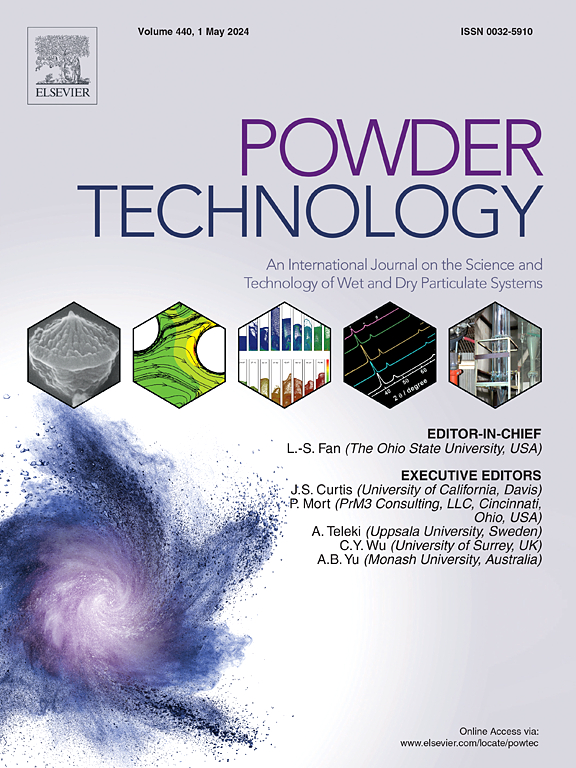On the use of the Fourier transform to determine contact curvature distributions in additive manufacturing powders
IF 4.5
2区 工程技术
Q2 ENGINEERING, CHEMICAL
引用次数: 0
Abstract
Particle size and shape distributions affect many aspects of powder processing; for example, shape and contact curvature are fundamental to the mechanics of powder spreading, packing, and sintering in powder-bed additive manufacturing. In this paper, we revisit the use of Fourier transforms for detailed shape characterization, including local curvature of particle perimeters and distributions thereof. Fourier transforms describe particles as symbolic functions that are differentiable, enabling direct mapping of curvature. Dynamic image analysis was used to collect 2D particle images of fine metal powders. Two types were compared, one made by gas atomization, and the other by a cold mechanical size reduction process, both suitable for additive manufacturing using laser powder-bed fusion. Global distributions in shape factors including contact curvature were analyzed. Results suggest the utility of curvature distributions as a unique and differentiating shape characteristic.

求助全文
约1分钟内获得全文
求助全文
来源期刊

Powder Technology
工程技术-工程:化工
CiteScore
9.90
自引率
15.40%
发文量
1047
审稿时长
46 days
期刊介绍:
Powder Technology is an International Journal on the Science and Technology of Wet and Dry Particulate Systems. Powder Technology publishes papers on all aspects of the formation of particles and their characterisation and on the study of systems containing particulate solids. No limitation is imposed on the size of the particles, which may range from nanometre scale, as in pigments or aerosols, to that of mined or quarried materials. The following list of topics is not intended to be comprehensive, but rather to indicate typical subjects which fall within the scope of the journal's interests:
Formation and synthesis of particles by precipitation and other methods.
Modification of particles by agglomeration, coating, comminution and attrition.
Characterisation of the size, shape, surface area, pore structure and strength of particles and agglomerates (including the origins and effects of inter particle forces).
Packing, failure, flow and permeability of assemblies of particles.
Particle-particle interactions and suspension rheology.
Handling and processing operations such as slurry flow, fluidization, pneumatic conveying.
Interactions between particles and their environment, including delivery of particulate products to the body.
Applications of particle technology in production of pharmaceuticals, chemicals, foods, pigments, structural, and functional materials and in environmental and energy related matters.
For materials-oriented contributions we are looking for articles revealing the effect of particle/powder characteristics (size, morphology and composition, in that order) on material performance or functionality and, ideally, comparison to any industrial standard.
 求助内容:
求助内容: 应助结果提醒方式:
应助结果提醒方式:


